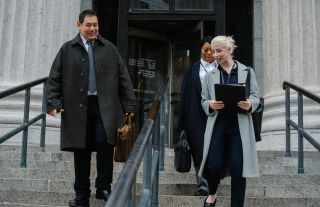Workplace Dynamics
Research Shows Talent Being Lost Due to RTO Policies
Companies face challenges retaining staff with return-to-office mandates
Posted June 8, 2024 Reviewed by Ray Parker
Key points
- Strict RTO policies at tech giants are driving senior employees to more flexible workplaces.
- Increased in-office requirements correlate with a younger, less experienced workforce, impacting innovation.
- SpaceX's strict RTO policies led to a significant loss of experienced staff, threatening its competitive edge.

A seismic shift has significantly reshaped the corporate landscape, most notably within tech behemoths such as Microsoft, SpaceX, and Apple. Traditionally celebrated as vanguards of innovation and exemplars of progressive workplace cultures, these giants are currently navigating the complex dynamics introduced by return-to-office (RTO) policies. Recent pioneering research conducted by David Van Dijcke at the University of Michigan, Florian Gunsilius at Ipsos Public Affairs, and Austin Wright at the University of Chicago casts a revealing light on these policies. The study suggests that RTO might be subtly undermining the robust frameworks upon which these companies have long relied to sustain their leadership and innovative edge.
Research on Return-to-Office Backlash
The study in question explores a colossal dataset, encompassing 260 million resumes paired with detailed corporate records, unveiling significant and telling trends. The researchers observed a marked migration of senior employees and those with prolonged tenure to companies that offer more flexible working conditions. This trend transcends mere job changes and represents a deliberate gravitation toward environments where flexibility and work-life balance are prioritized and celebrated. This shift is driven by evolving expectations regarding what constitutes a supportive and progressive workplace.
The methodology employed in this research involved creating a model that simulated what employee retention might have looked like in the absence of RTO mandates. This sophisticated analysis confirmed that the observed shifts toward a younger, less-experienced workforce were directly linked to the implementation of RTO policies. This linkage indicates that the changes are not a result of broader industry trends or other external factors but rather are a direct outcome of internal policy decisions.
For example, the researchers find that after its RTO, Microsoft had a 6% increase in the number of employees with 0 to 3 years of tenure, compared to the counterfactual model in which they didn’t have an RTO. For Apple, the same shift was by 4%, and for SpaceX, a whopping 15%.
What explains these differences? The researchers studied the initial RTO announcements and implementations at each company. Apple mandated 1 day a week in the office during its first wave of RTO, while Microsoft required 2.5, and SpaceX an extreme 5 days, full-time in the office. The corresponding declines in seniority in each company, thus, corresponded to the length of days required in the office. It’s rare that you get such a neat and tidy result from a real-world study, but when you do, the data speaks volumes.
Unintended Consequences Lead to Return-to-Office Backlash
This thorough analytical approach underscores the unintended consequences of RTO mandates. While these policies might have been designed to enhance collaboration and restore pre-pandemic operational norms, they appear to be having the opposite effect on employee retention, particularly among those who have the most to offer in terms of experience and capability. The findings suggest that a reevaluation of these policies could be crucial for companies that wish to retain their competitive edge and leadership in innovation.
The implications of this exodus of seasoned employees are profound and far-reaching. When these individuals depart, they take with them more than just their expertise. They also remove a reservoir of deep institutional knowledge and leadership acumen that is integral to driving innovation and strategic direction. The loss of such critical resources threatens to destabilize the foundations upon which these companies' creativity and leadership are built. This could potentially lead to a weakening of their positions as industry leaders, making room for more agile competitors to rise.
As companies continue to reassess workplace strategies in the post-pandemic era, this research offers invaluable insights into the complex interplay between employee retention and workplace flexibility. It challenges the notion that returning to traditional office environments is the key to maintaining productivity and fostering innovation. Instead, it highlights the importance of adapting to the new realities of the workforce's needs and preferences, suggesting that flexibility and supportiveness in workplace policies could be critical levers for sustaining not just productivity but also creativity and leadership in challenging times.
Furthermore, this shift is emblematic of a broader narrative sweeping across the tech industry and beyond. The evolving competitive landscape is being shaped not solely through advancements in products and services but significantly through the cultivation of workplace environments that attract and retain top talent. Companies that embrace and integrate greater flexibility into their operational policies are not only managing to keep their best and brightest but are also drawing in skilled workers from firms that have not yet recognized or adapted to these workplace preferences.
How to Avoid RTO Backlash
These talent drains represent a significant strategic crisis for companies with stringent RTO policies. Such organizations will inevitably find themselves at a serious competitive disadvantage. They risk losing not just the battle for top talent but also eroding their own foundations of innovation and employee engagement. This is not merely about individuals choosing to work elsewhere; it’s about vital, experienced talent opting for environments that better align with their personal and professional aspirations for flexibility and work-life balance. The migration of these seasoned professionals enriches the competitive edge of more adaptable firms, which might use this influx of expertise to accelerate their own innovation, potentially outpacing the companies from which these talents departed.
A version of this post also appears on disasteravoidanceexperts.com.
References
David Van Dijcke, Florian Gunsilius, and Austin Wright, BFI Working Paper 2024-56, “Return to Office Distribution and the Tenure Distribution” https://bfi.uchicago.edu/working-paper/return-to-office-and-the-tenure-…
Ahlrichs N. S. (2007). Managing the generations differently to improve performance and profitability. Employee Relations Today, 34(1), 21-31. https://onlinelibrary.wiley.com/doi/10.1002/ert.20138
Meijer, E. M., Frings-Dresen, M. H. W., & Sluiter, J. K. (2011, January 4). Effects of office innovation on office workers' health and performance. Taylor & Francis. https://www.tandfonline.com/doi/abs/10.1080/00140130902842752
Fernandez Jilbe, A. E., Riethof, M. (2002, August 22). Labour relations in the era of globalization and neo-liberal reforms. Taylor & Francis. https://www.taylorfrancis.com/chapters/edit/10.4324/9780203522332-8/lab…




